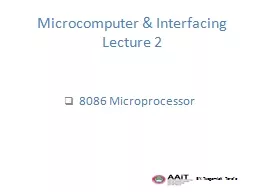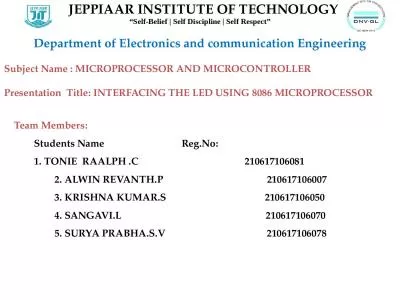PPT-8086 [2] Ahad Internal!
Author : liane-varnes | Published Date : 2018-02-16
External 8086 vs 8088 16bit Data Bus 20bit Address 8bit Data Bus 20bit Address 8088 8086 Only external bus of 8088 is 8bit Pin configuration 80868088 Busses
Presentation Embed Code
Download Presentation
Download Presentation The PPT/PDF document "8086 [2] Ahad Internal!" is the property of its rightful owner. Permission is granted to download and print the materials on this website for personal, non-commercial use only, and to display it on your personal computer provided you do not modify the materials and that you retain all copyright notices contained in the materials. By downloading content from our website, you accept the terms of this agreement.
8086 [2] Ahad Internal!: Transcript
Download Rules Of Document
"8086 [2] Ahad Internal!"The content belongs to its owner. You may download and print it for personal use, without modification, and keep all copyright notices. By downloading, you agree to these terms.
Related Documents

![PPT-8086 [2] Ahad Internal!](https://thumbs.docslides.com/632124/8086-2-ahad-internal.jpg)












